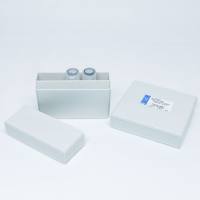Intracellular Recording In Vivo and Patch-Clamp Recording on Brain Slices
互联网
672
Electrical activity is one of the major ways by which neurons communicate with each other. To understand how the brain works
in physiological and pathological conditions, we need to know how the neuron works by monitoring the electrical activities
of the neuron at different circumstances. Many electrophysiological techniques are available to obtain information from nerve
system. This chapter introduces two techniques that can collect information of synaptic transmission and intrinsic membrane
properties from individual neurons. Intracellular recording in vivo can examine the spontaneous firing, evoked postsynaptic
potentials, and membrane properties at the cellular level in intact animals. This technique preserves the integrity of the
brain, as well as the whole body system of the animal, and therefore is ideal to investigate the electrophysiological changes
in various animal models of neurological disorders. Patch-clamp recording on brain slices is a well-control reduced system
to examine the electrophysiology at the cellular level with the whole-cell mode. It can also examine the single-ion-channel
activities with the cell-attached mode or by isolation of a small piece of cell membrane. Combining pharmacological manipulations,
the patch-clamp recording on brain slices significantly expand the horizon of electrophysiological studies on neurons in physiological
and pathological conditions.







